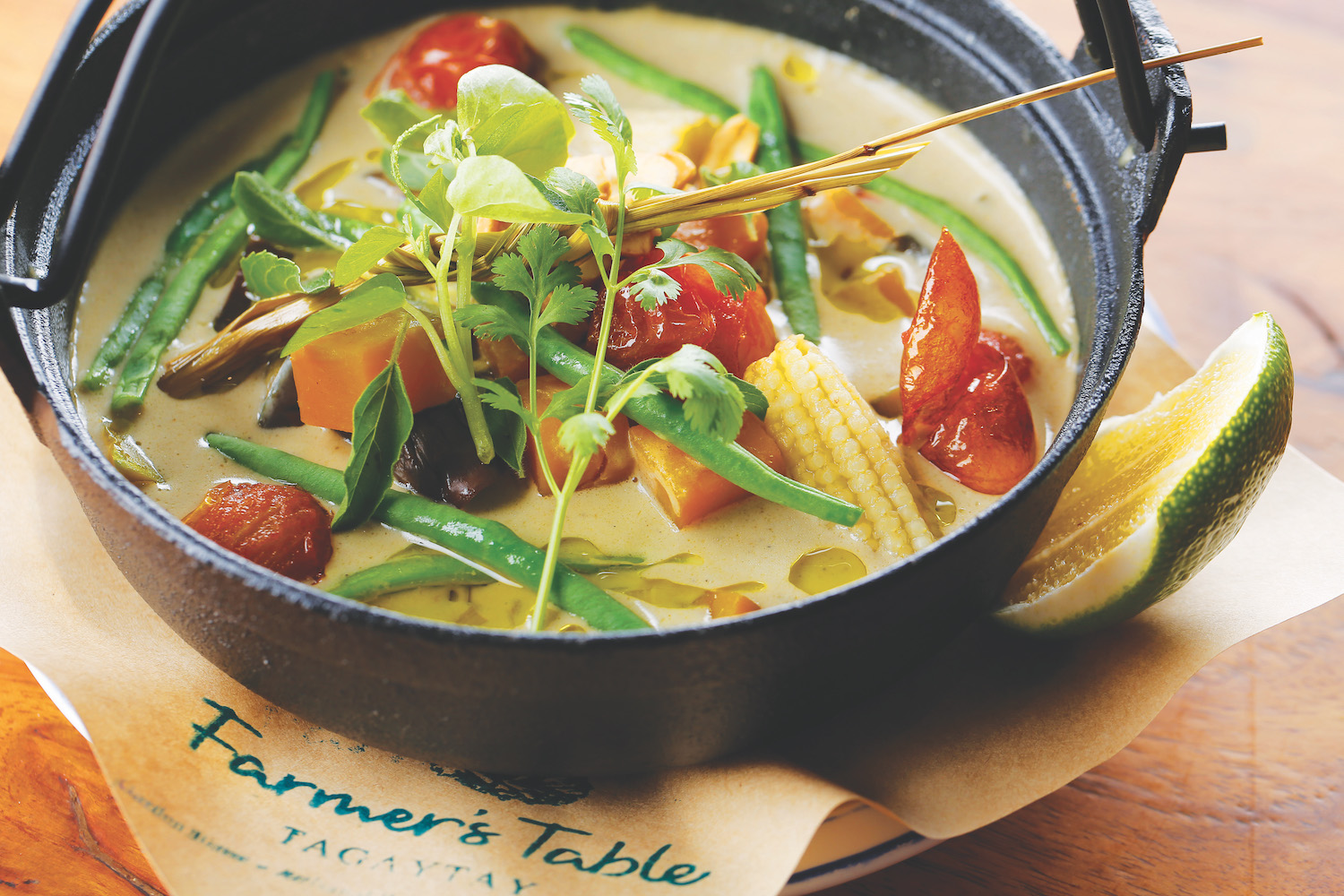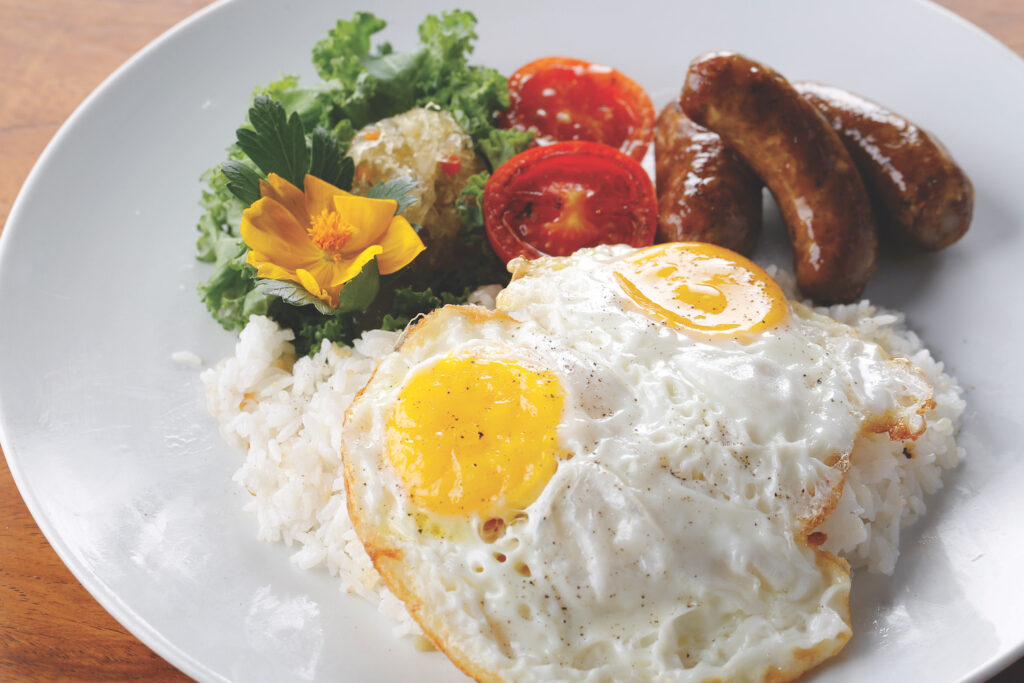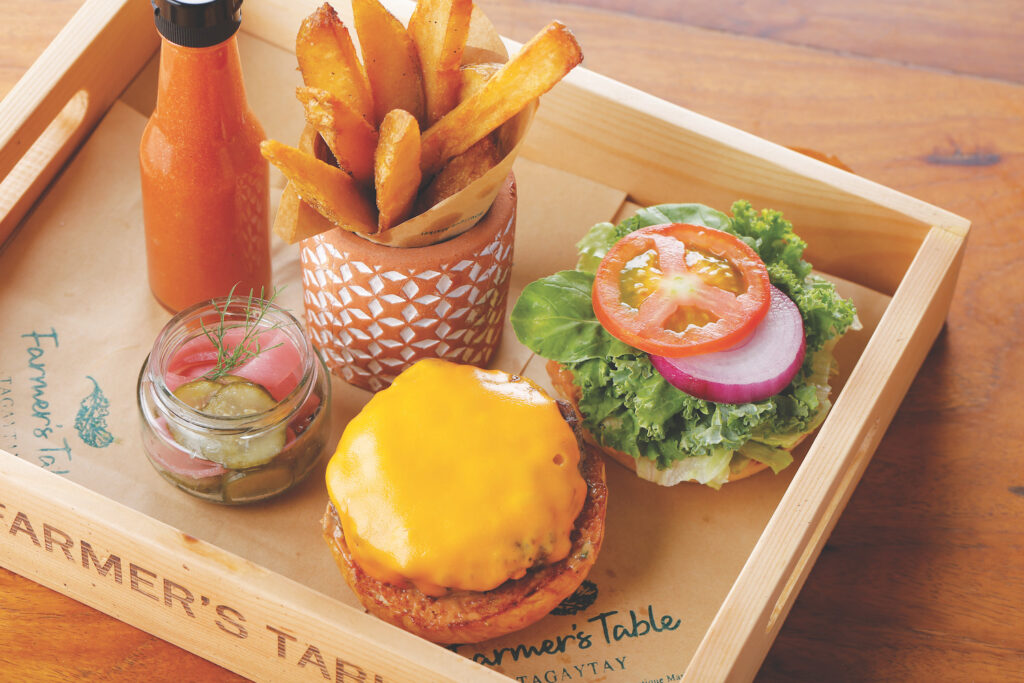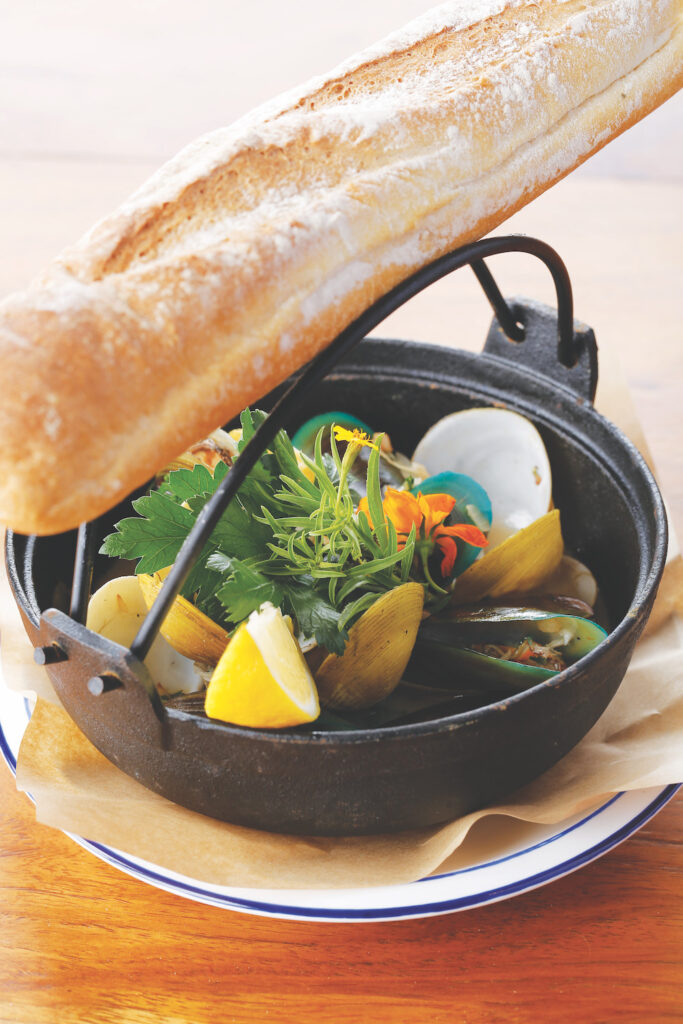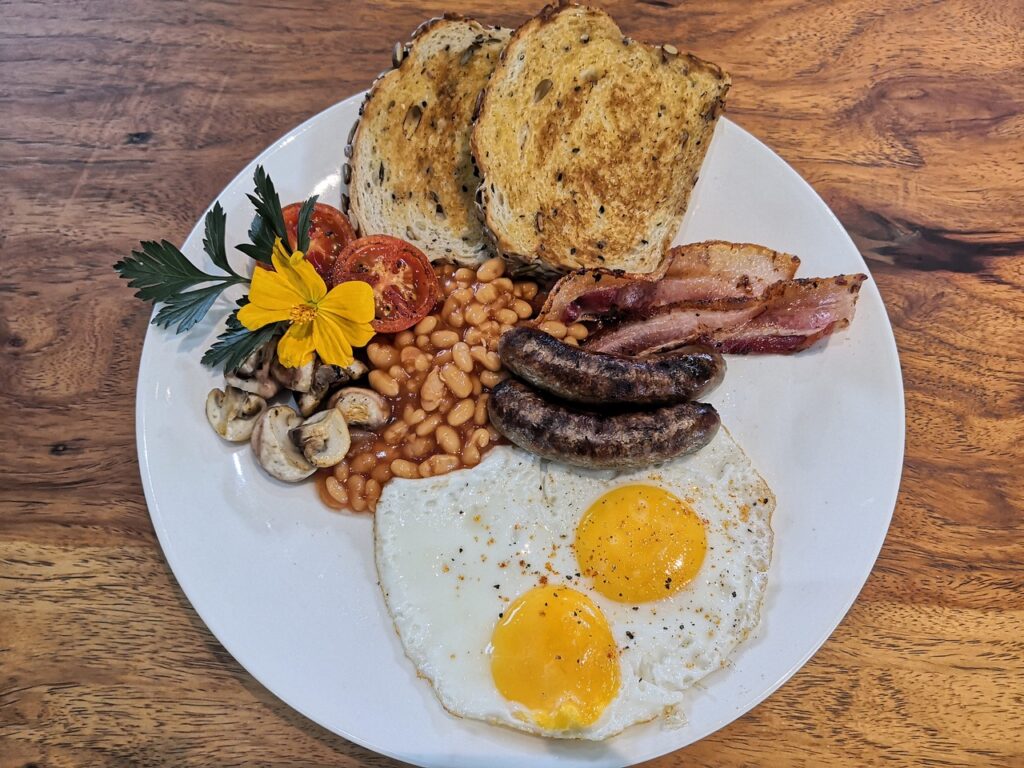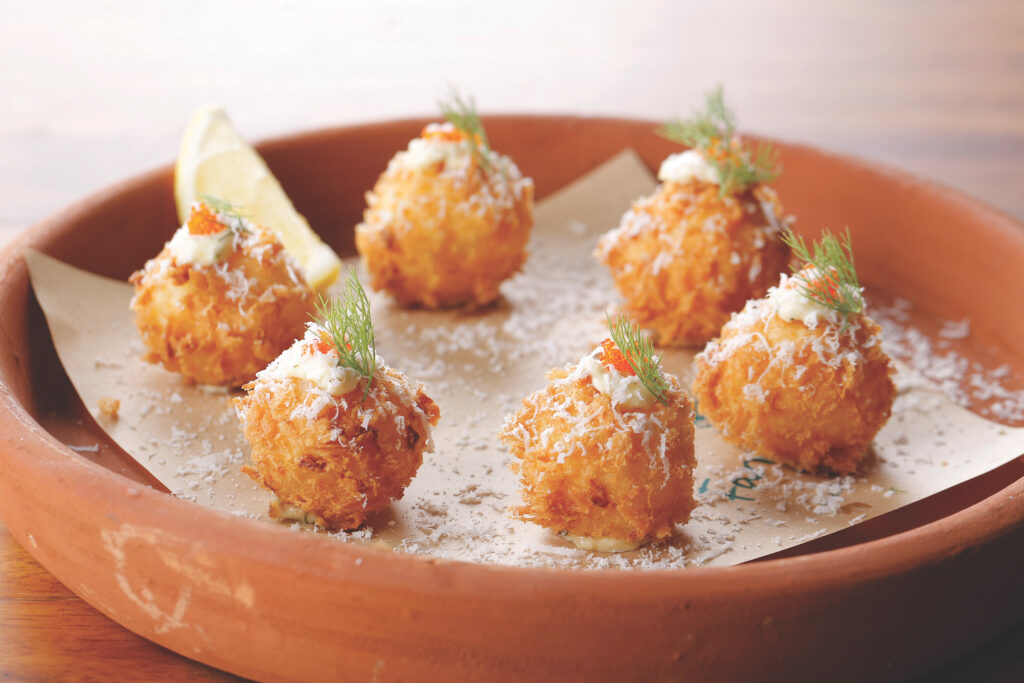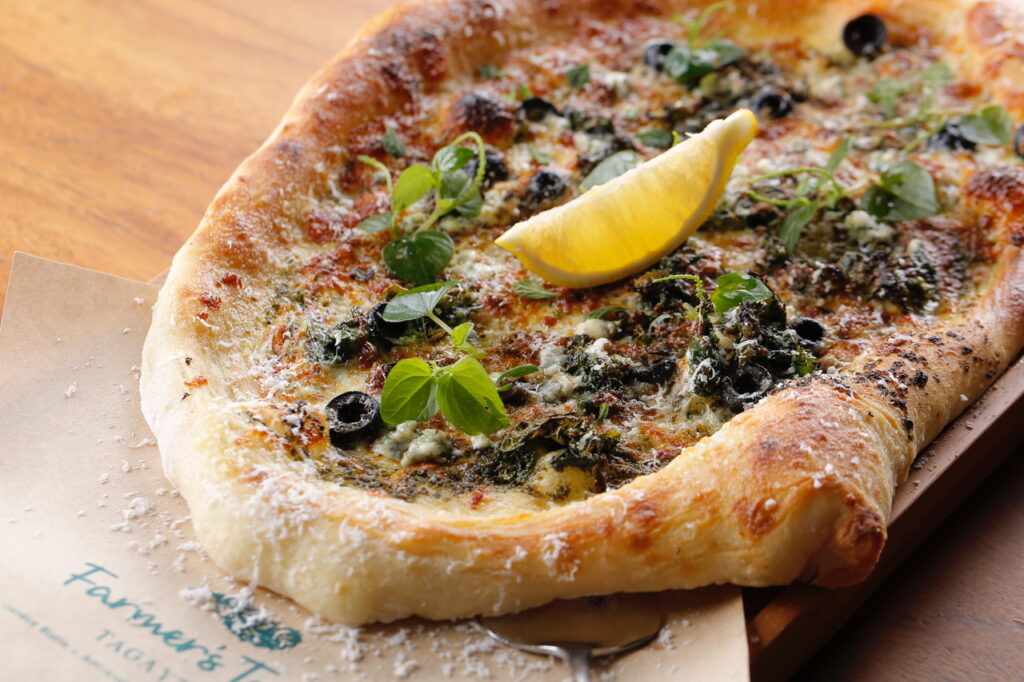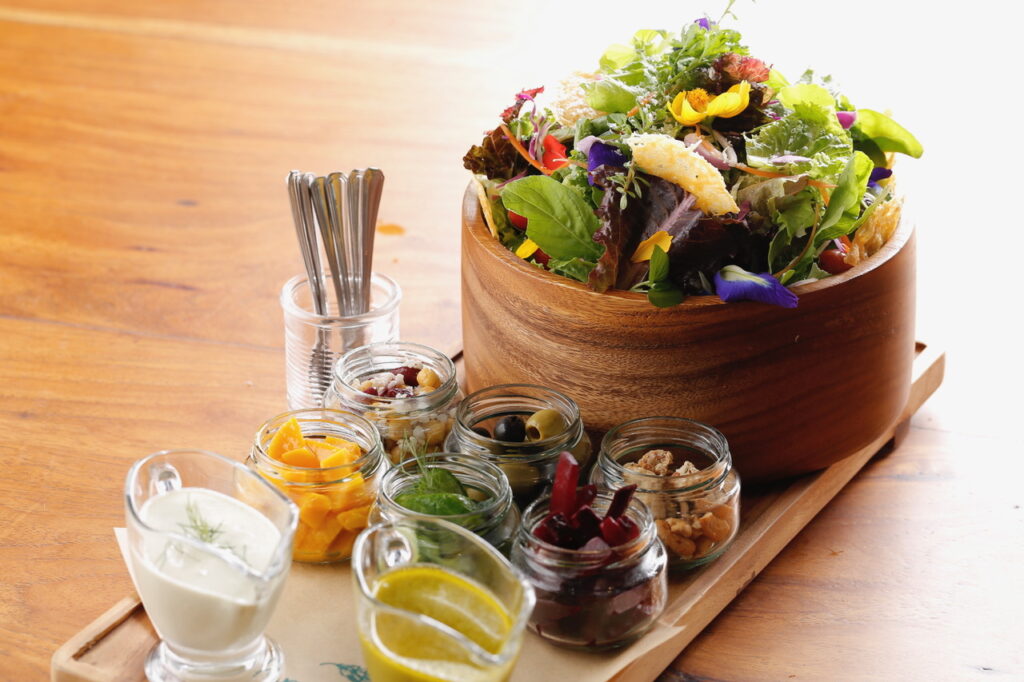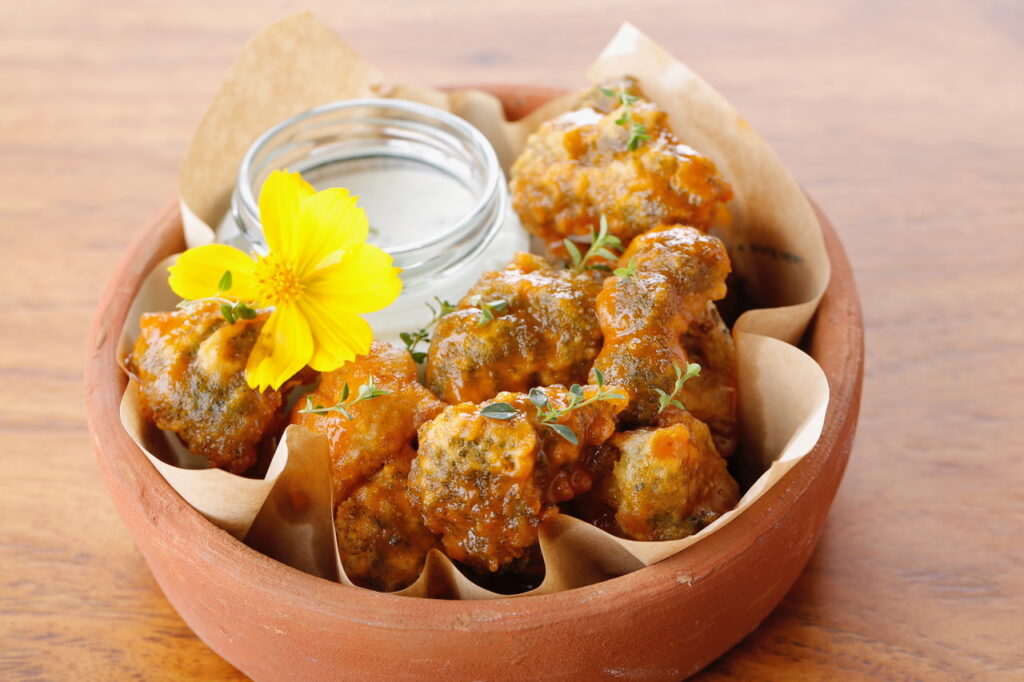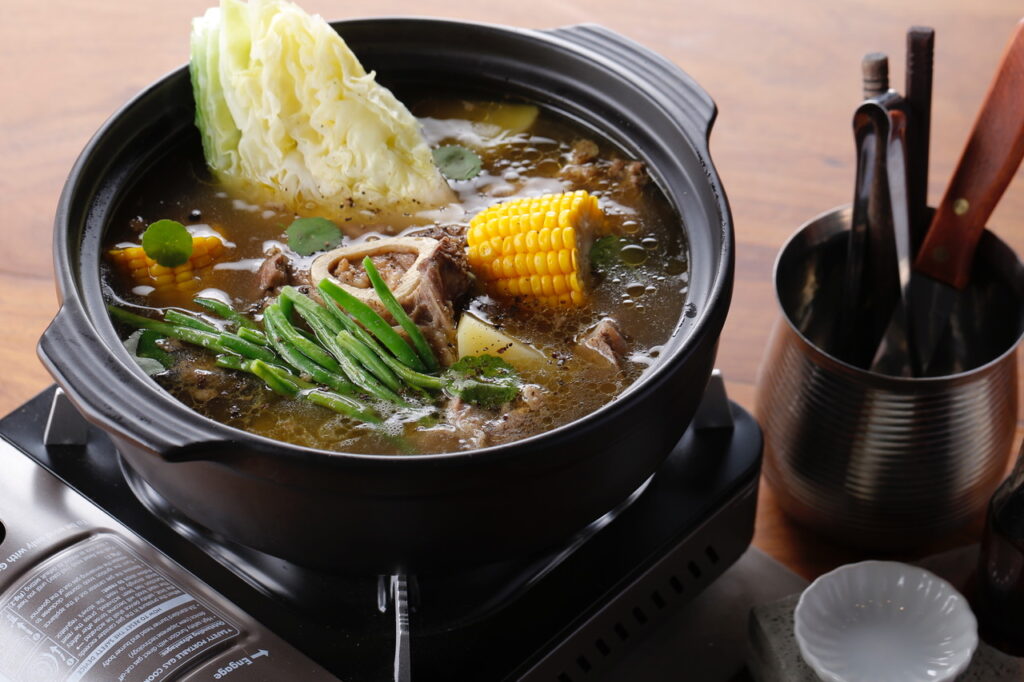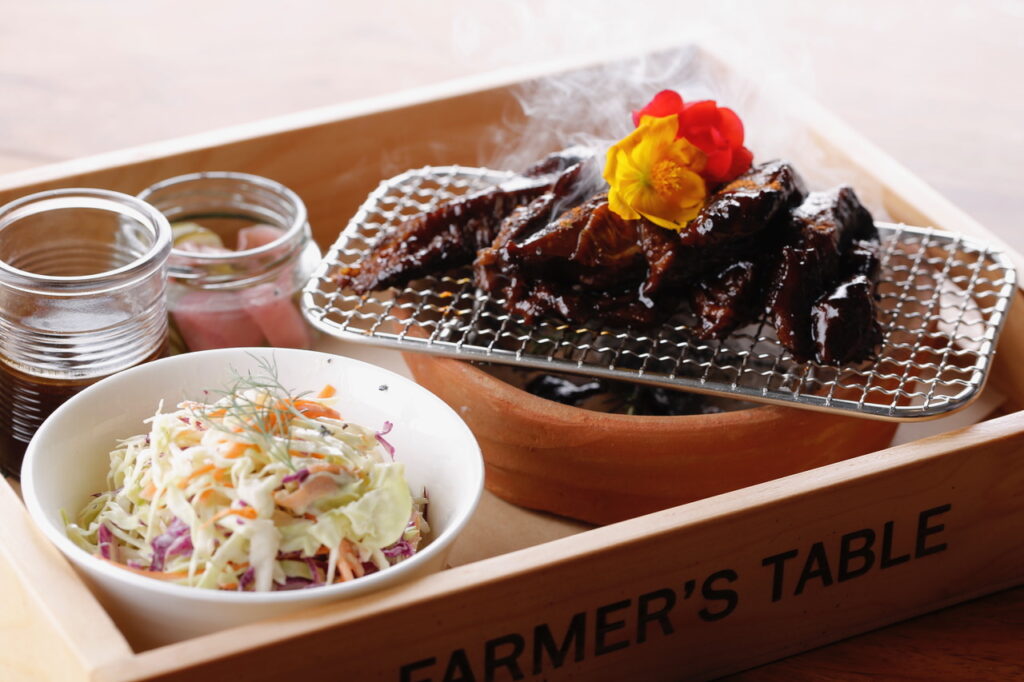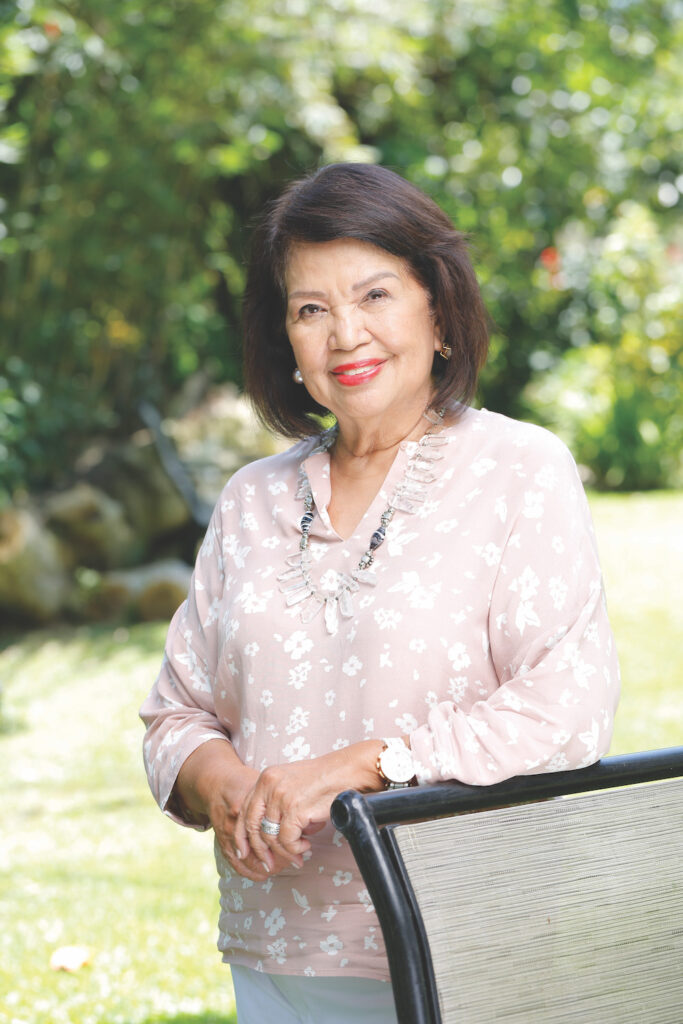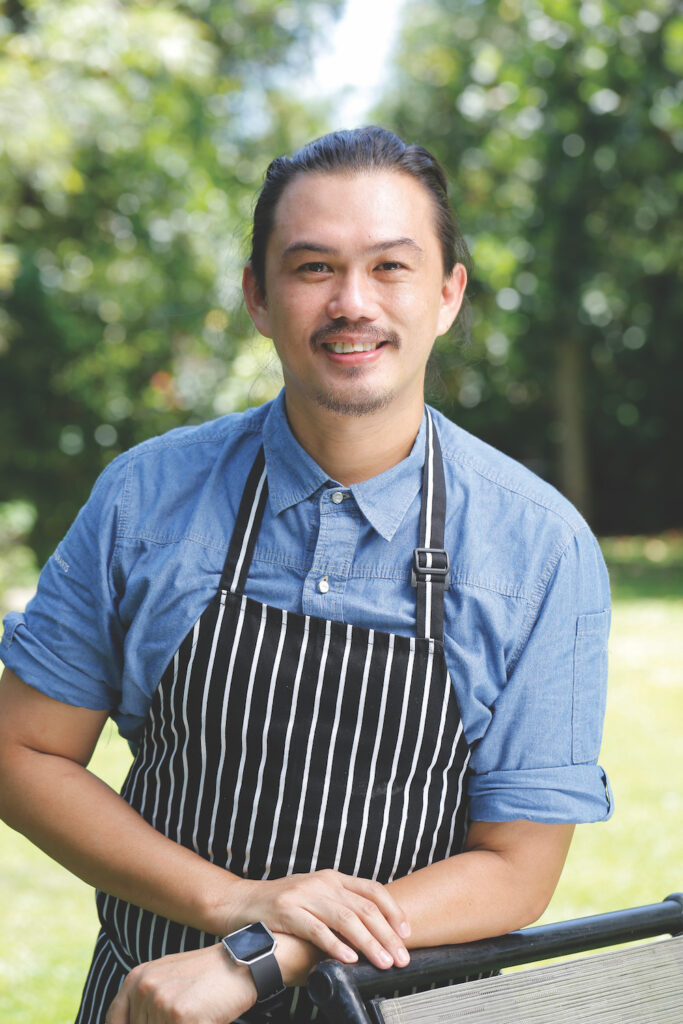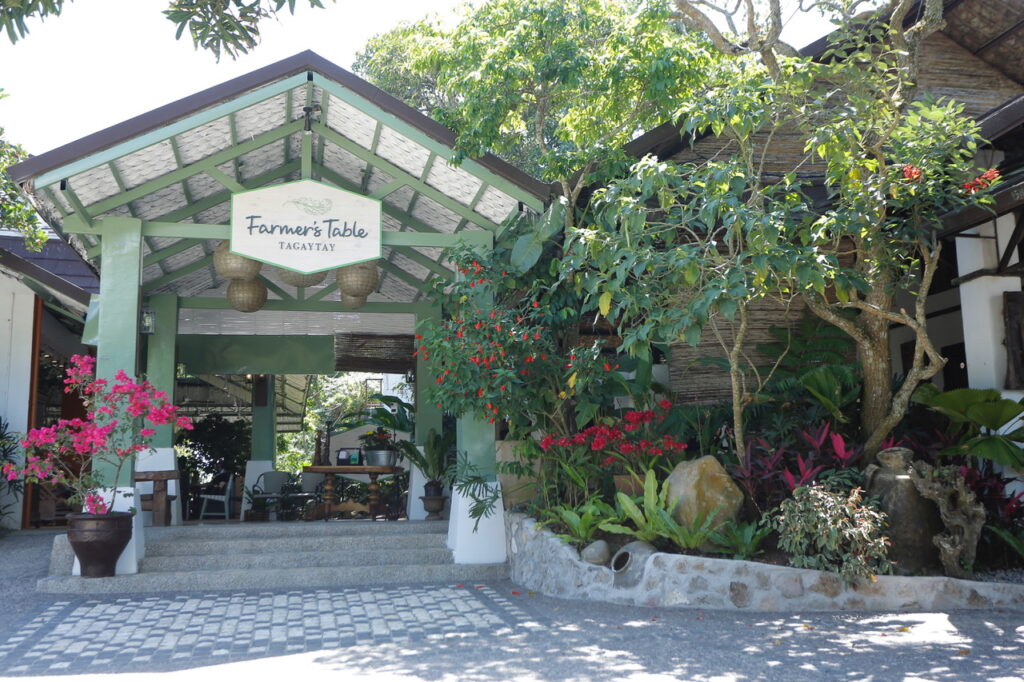Situated inside Nurture Wellness Village in Tagaytay, Farmer’s Table is probably one of the best definitions of what a “locavore” restaurant, Philippine-style, is.
By Alex Y. Vergara
If you can’t bring the food-laden table to the diner, then bring the diner to the table. But what’s on the table isn’t just any other food. They’re meticulously selected and mostly farm-fresh ingredients sourced almost every day from nearby locales. And, in keeping with government’s current health and safety protocols, they’re served al fresco to socially distanced groups of diners.
It’s this conscious attempt to put a premium on freshness, which has been one of the main come-ons of Farmer’s Table since it opened last May. Sinfully delicious Filipino dishes like bulalo, kare- kare and crispy pata served alongside garden-fresh salads, plant-based burgers, oven-baked pizzas and rich, nutritious smoothies have broadened its appeal to diners raring to shake off cabin fever and eat out with close friends and family.
Growing clientele
Thanks to the recently opened Skyway 3, a growing number of diners living as far away as Quezon City, even Bulacan, drive almost regularly, especially on weekends, to Farmer’s Table to satisfy their cravings. But the restaurant is also slowly building a reputation among diners within the “neighborhood,” which consists of towns and cities in Cavite, Laguna and certain parts of Batangas.
And it doesn’t hurt that the prime movers behind the venture are seasoned chefs and restaurateurs from the Raintree Hospitality Group, the company behind such restaurants as Saboten, Providore, Chotto Matte, Chelsea and the now-defunct M Café.
Annabella Wisniewski, Raintree Hospitality’s chairperson, with son Martin Wisniewski and chef-restaurateur Kalel Chan, is leasing the space from veteran hoteliers and wellness advocates Cathy and Mike Turvil, owners of Nurture Wellness Village.
“Since we’re in Tagaytay, in the midst of nature and country living, Farmer’s Table is more tailored to the environment compared to many of our previous and existing concepts,” Annabella explains. “We work around such unique features as the abundance of fresh fruits and veggies as well as lots of sunshine and cool weather.”
“We also try to adapt to what ingredients are available because some of the items on the menu have seasonal ingredients,” Martin adds. This explains the need for him and Kalel to tweak the menu regularly to reflect what’s in season.
Pandemic’s effects
Like most entrepreneurs in the food and hospitality industries, Annabella and Cathy continue to feel the brunt of the COVID-19 pandemic on their respective businesses, as both their operations and bottom lines have shrunk compared to less than two years ago due to the series of government-imposed lockdowns and quarantines since early 2020.
As a result, Cathy had to consolidate her operations by focusing on her company’s core strength, which is running Nurture’s hotel and spa. That also meant leaving the reins of running the establishment’s F&B component to somebody else.
On the other hand, with most of her Metro Manila-based restaurants either closed or operating in a limited capacity, Annabella and her group were looking for alternative food concepts they could run without having to fully contend with stifling health protocols imposed in urban centers. They also needed to find a balance between income generation and the health of their staff and diners.
Soon after, the two women, who have known each other for years, reconnected and eventually agreed to work loosely as partners, with Annabella leasing the space once allotted to Nurture’s in-house restaurant. In its place these days is Farmer’s Table, which is a separate and independent entity from Nurture Village
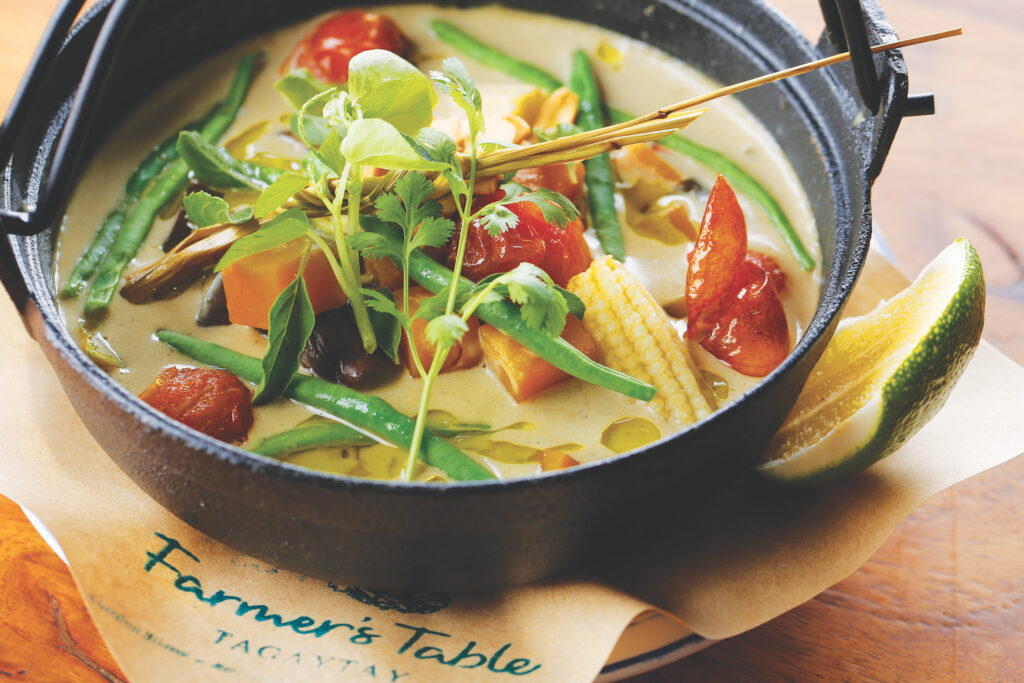
Langka Vegetable Green Curry
But before they made the big move, Annabella and company had to refurbish the place, repainting, for instance, huge steel frames that support the roof and high ceiling from dark brown and black to grass green. They also gave the nude-colored, anahaw-lined ceiling a light coat of silver.
“The place was dark and looked like a barn,” she says. “It was also a bit deteriorated. During the repainting, we also had some sections opened up, which was apropos during a pandemic because al fresco dining is encouraged.”
Martin, who commissioned a friend to paint a mural on one of the newly painted walls, and Kalel then went about sourcing for old furniture pieces from Raintree’s stockroom in Metro Manila. The charming and eclectic mix of furniture pieces came from the group’s different restaurants, which are now either closed or have scaled down operations.
“The only new things here are the pin lights and ceiling fans,” says Martin. “And, of course, those two potted mini trees, which my mom, who has a knack for decorating, added. They get plenty of sunlight during certain hours of day because of the skylight.”
Although Cathy has no say when it comes to running the new restaurant, including items that are served on the menu, her inputs are welcome since Farmer’s Table is also providing food to Nurture Wellness Village’s guests. Come breakfast time, for instance, hotel guests have their first meal of the day at Farmer’s Table.
The Turvil couple’s nearby organic farm also supplies Farmer’s Table with a fair amount of vegetables, particularly kale, a known superfood that’s found in many of the items Martin and Kalel serve—from salads to juices, pizzas to certain hot dishes.
Most of the rest of the ingredients, including fresh fish, seafood, pork and beef, which is used for the restaurant’s bulalao, are sourced from suppliers within Cavite and Batangas.
“We don’t have to go far because almost everything can be sourced here,” says Kalel, referring to the entire Southern Tagalog region. One of the few items they still have to buy from Metro Manila-based suppliers is prime imported steak because the quality of local beef remains inconsistent.
Their decision to include certain classic Filipino dishes in a menu that’s decidedly healthy and Western was in anticipation of likely demand. “When you drive to Tagaytay, especially if you come from Metro Manila, the number one thing on your mind is bulalo. Then tawilis. Perhaps, also kare-kare. We purposely added these items so that diners who are craving for them won’t go home disappointed,” Kalel explains.
In fact, he declares with a hint of pride, citing his acquaintance and his family who just dined in the restaurant earlier, that there’s something for everybody at Farmer’s Table. “The dad had bulalo, while the mom helped herself to a fresh plant-based salad,” says Kalel. “Their child ordered tapa and freshly baked pizza.”
Given the range of items on their menu, which also includes such dishes as seafood guava sinigang, kalderetang osso bucco, smoke tinapa cream croquettes and pancit “hacienda,” among others, don’t they find it difficult to keep a huge inventory? Yes, it’s a challenge, but Annabella, speaking like a veteran restaurateur that she is, quickly points out, “we’re using plenty of cross ingredients.”
She and her team are just too happy to see people slowly coming back, savoring their favorite dishes and having a good time despite the rather bleak situation. Farmer’s Table’s huge floor space, distanced tables and natural cross ventilation allow them to do so with confidence just like in the old days.
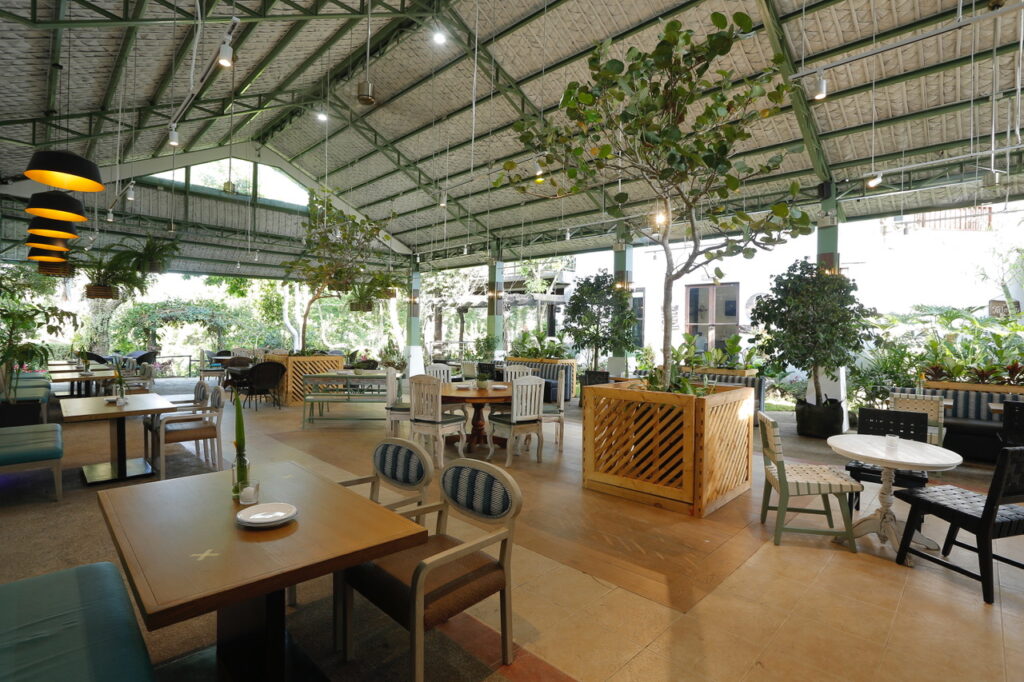
(This story first appeared in the August-September issue of PeopleAsia magazine)

